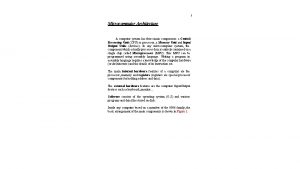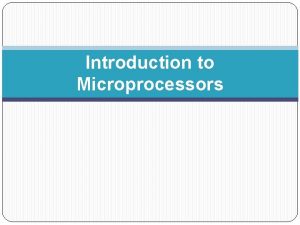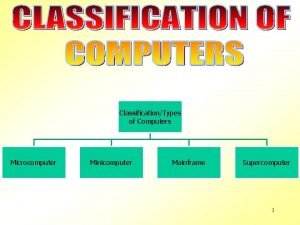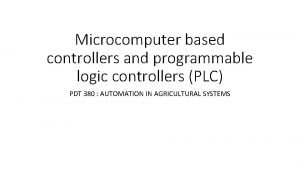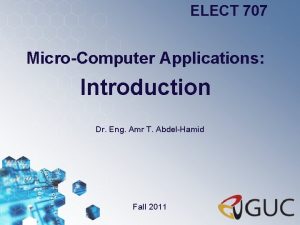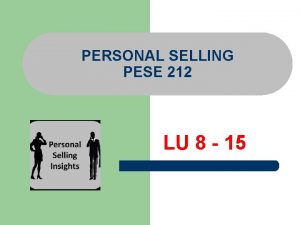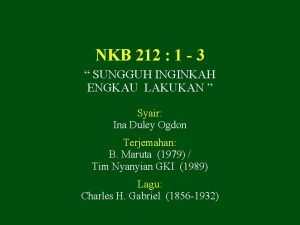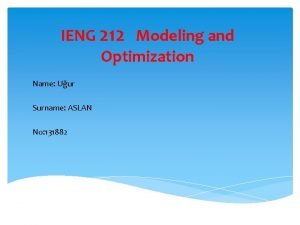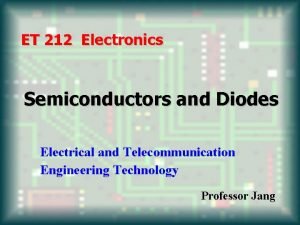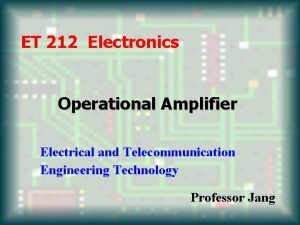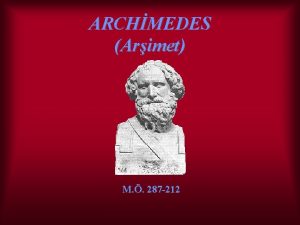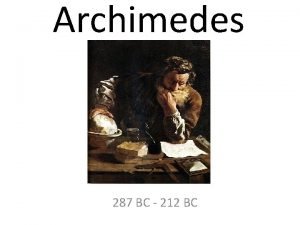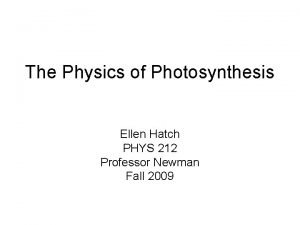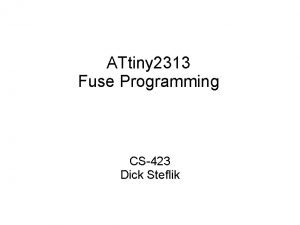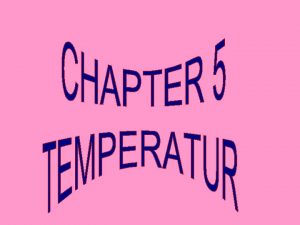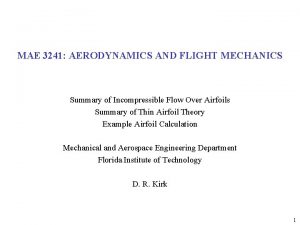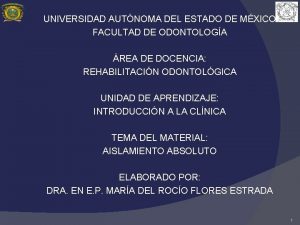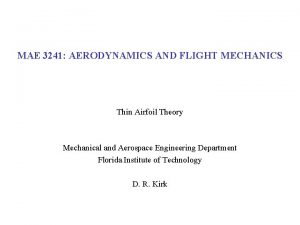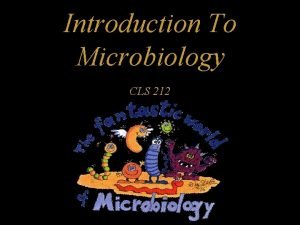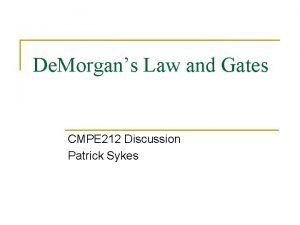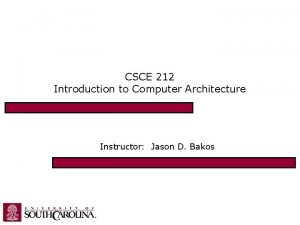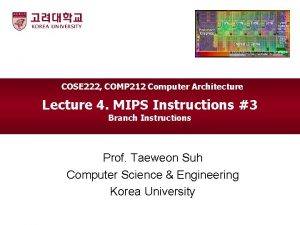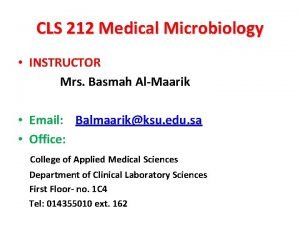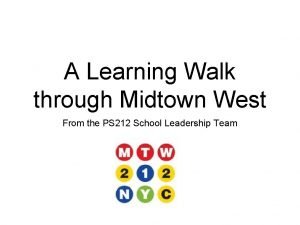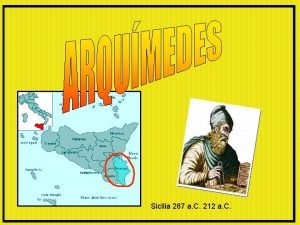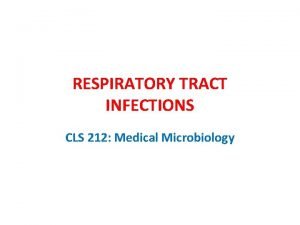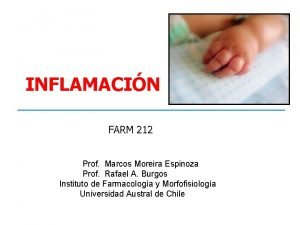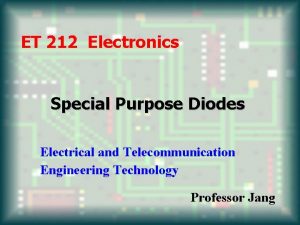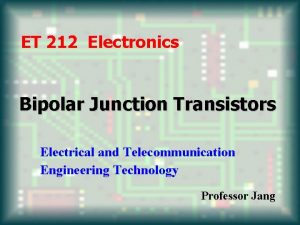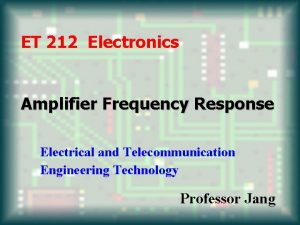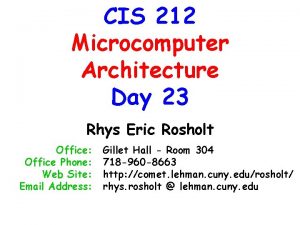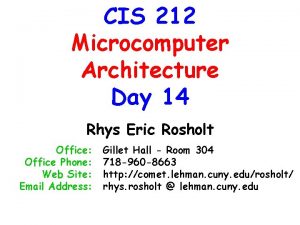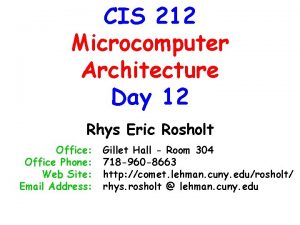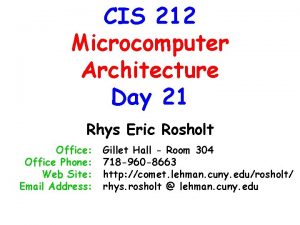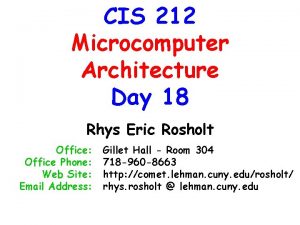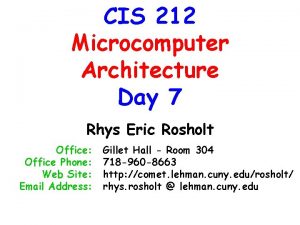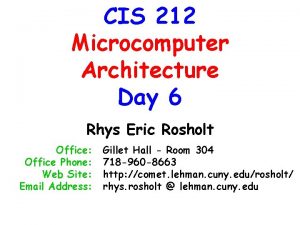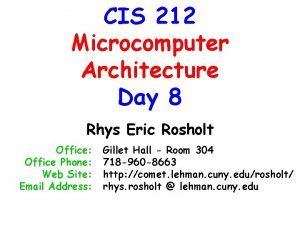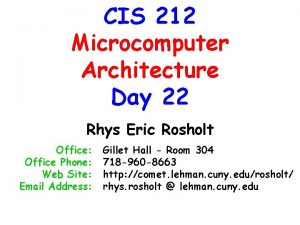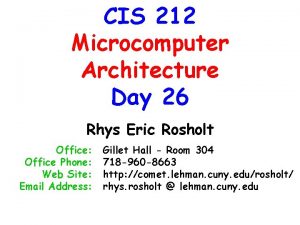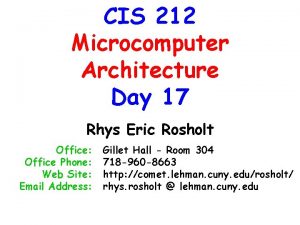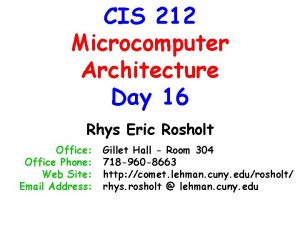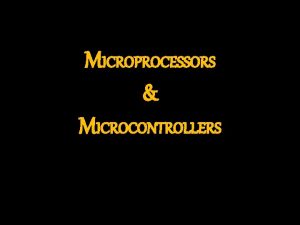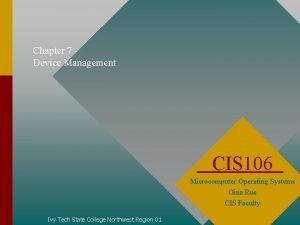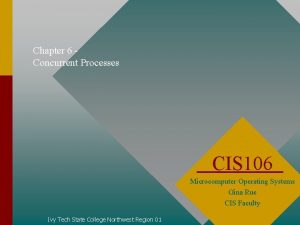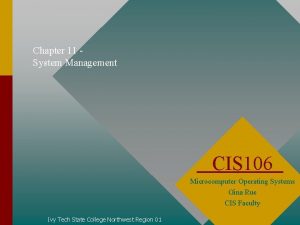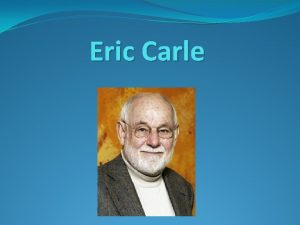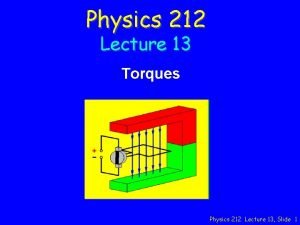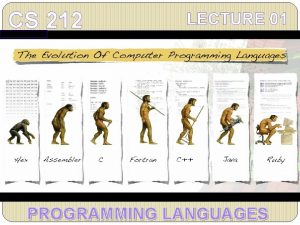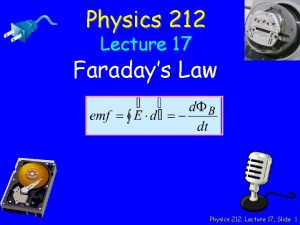CIS 212 Microcomputer Architecture Day 19 Rhys Eric






































- Slides: 38

CIS 212 Microcomputer Architecture Day 19 Rhys Eric Rosholt Office: Office Phone: Web Site: Email Address: Gillet Hall - Room 304 718 -960 -8663 http: //comet. lehman. cuny. edu/rosholt/ rhys. rosholt @ lehman. cuny. edu

Chapter 7 Input/Output Technology

Chapter 7 Input/Output Technology Chapter Outline Basic Concepts of Print and Display Technology Focus – Adobe Postscript and Portable Document Format Video Display Printers Manual Input Devices Optical Input Devices Audio I/O Devices

Digital Cameras • Employ optical scanning technology to capture single or still images and store them as raw compressed bitmaps

Portable Data Capture Devices • Combine a keyboard, mark or bar-code scanner, and wireless communications to a wired base station or computer system • Provide rapid data capture (e. g. , warehouse inventory control, package routing and tracking)

Audio I/O Devices • Sound: an analog waveform that can be sampled and stored as digital data • Various mathematical transformations convert complex sounds to a single numeric representation • Sampling and playback rely on analog-todigital converters (ADC) and digital-toanalog converters (DAC) • Monophonic versus polyphonic

Purposes of Sound Generation and Recognition • General-purpose sound output (e. g. , warnings) • General-purpose sound input (e. g. , digital recording for voice email messages) • Voice command input • Speech recognition • Speech generation

Speech Recognition • Conceptually simple, but complicated by speaker variability, phoneme transitions and combinations, and real-time processing • Most current systems are speaker dependent • Digital signal processor (DSP) – Specialized to process continuous streams of audio or graphical data – Commonly embedded in audio and video hardware

Speech Recognition

Speech Generation • Audio response unit – Generates spoken messages based on textual input (e. g. , automated call routing) • Speech synthesis – Stores individual phonemes within the system • General-purpose audio hardware (sound card, multimedia controller)

General-Purpose Audio Hardware • Typically packaged as an expansion card that connects to the system bus of a workstation • Sound cards include an ADC, DAC, low-power amplifier, and connectors (jacks) for microphone, speaker, or headphone • Musical Instrument Digital Interface (MIDI) – Compact storage format

Typical Sound Card Components and Connections

Summary • Concepts, technology, and hardware used in communication between people and computers – Print and display concepts – Video display devices – Printers – Manual input devices – Optical input devices – Audio I/O devices

Chapter Goals • Describe common concepts of text and image representation and display including digital representation of grayscale and color, bitmaps, and image compression techniques • Describe the characteristics and implementation technology of video display devices • List and describe three predominant manual input technologies • Understand printer characteristics and technology • Describe various types of optical input devices including mark sensors, bar code readers, scanners, and digital cameras • Identify the characteristics of audio I/O devices, and explain how they operate

Chapter 8 Data and Network Communication Technology

Chapter 8 Data and Network Communication Technology Chapter Outline Communication Protocols Encoding and Transmitting Bits Transmission Media Channel Organization Focus – Serial and Parallel Storage Connections Focus – Infiniband Clock Synchronization Error Detection and Correction Focus – 802. 11 Wireless Network Standards Focus - Upgrading Storage and Network Capacity (Part I)

Chapter Goals • Explain communication protocols • Describe signals and the media used to transmit digital signals • Compare and contrast methods of encoding and transmitting data using analog or digital signals • Describe methods for efficiently using communication channels • Describe methods for detecting and correcting data transmission errors

Data and Network Communication Technology

Communication Protocol Set of rules and conventions for communication • • • Message content and format Bit encoding Signal transmission Transmission medium Channel organization Includes procedures for coordinating flow of data • Media access • Clock synchronization • Error detection and correction

Communication Protocol Components

Communication Protocol Components

Encoding and Transmitting Bits • Carrier waves • Modulation methods • Data bit encoding – analog signals – digital signals • Signals – Electrical, optical, or radio – Capacity and errors

Carrier Waves • A sine wave with encoded bits – transports bits from one place to another • Characteristics of sine waves – amplitude – frequency – phase • Importance of waves in communications – Travel through space, wires, and fibers – Can have patterns encoded in them

Carrier Waves

Modulation Methods • Techniques used to encode bits in sine waves – Frequency modulation (FM) – Amplitude modulation (AM) – Phase shift modulation – Multilevel coding

Amplitude Modulation (AM) represents bit values as specific wave amplitudes

Frequency Modulation (FM) represents bit values by varying carrier wave frequency while holding amplitude constant

Phase Shift Modulation represents bit values by making a sudden shift in signal phase which can be detected and interpreted as data

Multilevel coding embeds multiple bit values within a single wave characteristic

Analog Signals • Use full range of carrier wave characteristics to encode continuous data values • Can represent any data value within a continuum of values

Digital Signals • Can contain one of a finite number of possible values • Pulse code modulation (PCM) – Binary data transmission via square waves – Square waves preferred over short distances

Pulse Code Modulation (PCM)

Digital Threshold A digital signaling scheme defines a range of wave characteristic values to represent each bit value.

Signal Capacity and Errors

Signal Capacity and Errors • Analog signals compared with digital signals – Carry more information – Are more susceptible to transmission error

Transmission Media • Communication path that transports signals – copper wire – optical fiber • Characteristics – Raw data transfer rate • speed • capacity – Bandwidth – Susceptibility • noise • distortion • external interference • and attenuation

Communication Channel A communication channel consists of a sending device, receiving device, and the transmission medium that connects them.

Next Class Tuesday April 17, 2012 Rhys Eric Rosholt Office: Office Phone: Web Site: Email Address: Gillet Hall - Room 304 718 -960 -8663 http: //comet. lehman. cuny. edu/rosholt/ rhys. rosholt @ lehman. cuny. edu
 Day 1 day 2 day 3 day 4
Day 1 day 2 day 3 day 4 Microcomputer architecture
Microcomputer architecture Day 1 day 2 day 817
Day 1 day 2 day 817 Micro computer features
Micro computer features Applications of mini computer
Applications of mini computer Plc vs microprocessor
Plc vs microprocessor 707
707 Physics 212 gradebook
Physics 212 gradebook Physics 212 gradebook
Physics 212 gradebook Pese 212
Pese 212 Nkb 212
Nkb 212 Ienf 212
Ienf 212 Et 212
Et 212 Et 212
Et 212 Arm reach 212 cm on tiptoes
Arm reach 212 cm on tiptoes Archimedes ( arşimet) (mö 287–212 )
Archimedes ( arşimet) (mö 287–212 ) 287-212
287-212 Phys 212 equation sheet
Phys 212 equation sheet 212 instalaciones tecnicas ejemplos
212 instalaciones tecnicas ejemplos Attiny 212
Attiny 212 Có 3 thùng dầu mỗi thùng chứa 125l tóm tắt
Có 3 thùng dầu mỗi thùng chứa 125l tóm tắt Suhu suatu zat 212 f maka suhu mutlaknya adalah
Suhu suatu zat 212 f maka suhu mutlaknya adalah Naca 2412
Naca 2412 Grapa mariposa odontologia
Grapa mariposa odontologia Cls 212
Cls 212 Naca 65-006
Naca 65-006 Cls 212
Cls 212 Cmpe 212
Cmpe 212 212
212 212
212 Cls 212
Cls 212 Ps 212 midtown west
Ps 212 midtown west Vcela 212
Vcela 212 Calle sicilia 212
Calle sicilia 212 Cls 212
Cls 212 Permeabilidad vascular
Permeabilidad vascular Et 212
Et 212 Et 212
Et 212 Frequency response cbe
Frequency response cbe

